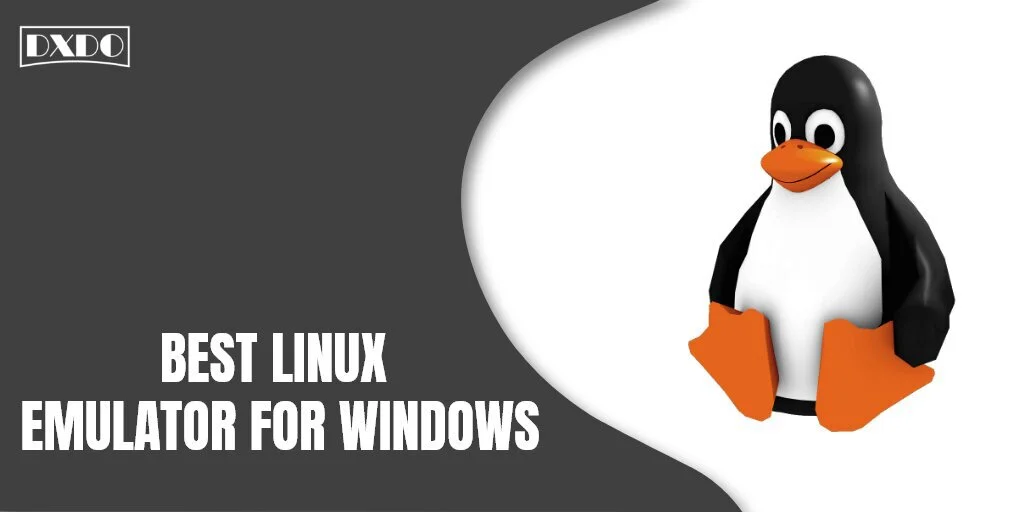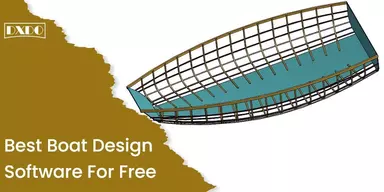If we try to explain the emulation process, we can simply define it by saying that it is the method to project something on the highest point by taking it up to another one. There is a variety of Linux Emulators available on the internet. These emulators allow you to run the specific system programs on another programming platform. Like that, the Linux Emulator also permits you to launch and process a Linux OS surrounded by a Windows OS environment.
These emulators can help you a lot to enjoy the advanced Linux functionality on your simple Windows program. As we all know, the Windows Operating System is not much advanced in features and can cause a barrier to enjoying the latest innovations. So, these emulators are very helpful for those who prefer to enjoy the latest technologies like wonderful streaming or want to use highly efficient technology. These emulators let them enjoy all these packages even on their cheap Window system.
List of Authentic Linux Emulators for Windows
We enlisted the best Linux Emulators for all Windows 10, 11, or XP Operating Systems. You can pick any of them and enjoy all the missing updates easily.
1. Cool Retro Term
It is a terminal emulator platform that offers a terminal Window to the users that looks like your regular terminal administrator on a computer monitor. It is developed in the late 1970s and the mid-1980s. You can select the monitor you want to simulate with a fair selection of profiles. It is an exciting and more pleasurable thing to play roundabout for 3 minutes. However, it is not very operational as compared to other regular terminal.
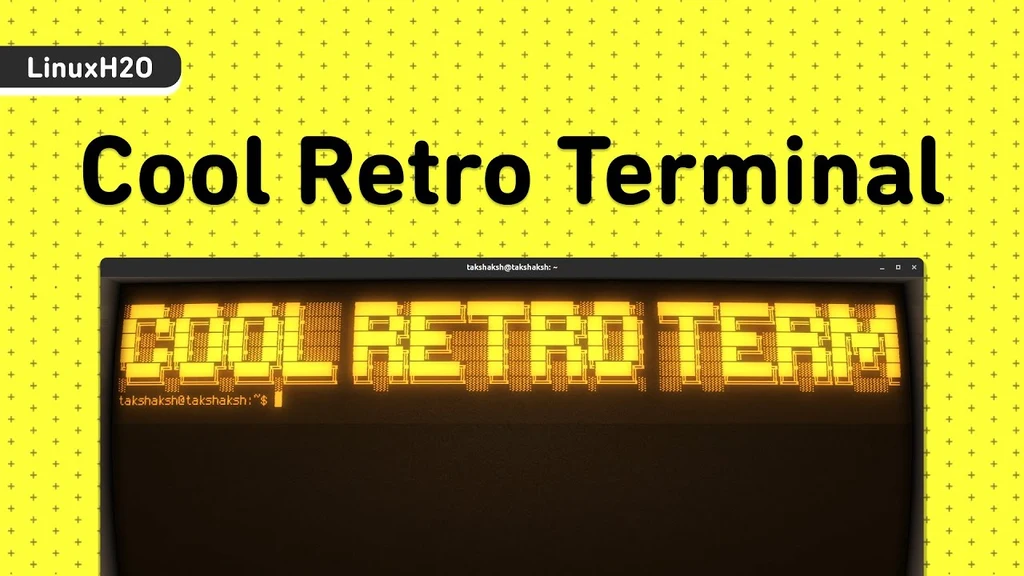
Cool-Retro-Term provides you a “retro” terminal Window that is able to perform every function as any other terminal, for example, console and xfce4-terminal. In fact, you share screenshots of the Cool-Retro-Term Window and people will believe that it’s actually an original CRT monitor. But interestingly, it looks slightly changed than other systematic terminals that run on your desktop.
2. Guake
Guake is a cascading terminal that is perfect for GNOME Setting. This application is launched under GPLv2+. It is available for Linux and all other Operating Systems like that. It is stimulated via a console in the PC game Quake that can be shot down from the topmost by pressing a special Default Key “F12” and then also contract upward when that key is pressed again. It is important to mention that Guake is not the first of this kind. It also supports many other terminals like Yakuake, KDE desktop environment, Tilda, etc. which are also considered slide up/down consoles of the computer game.
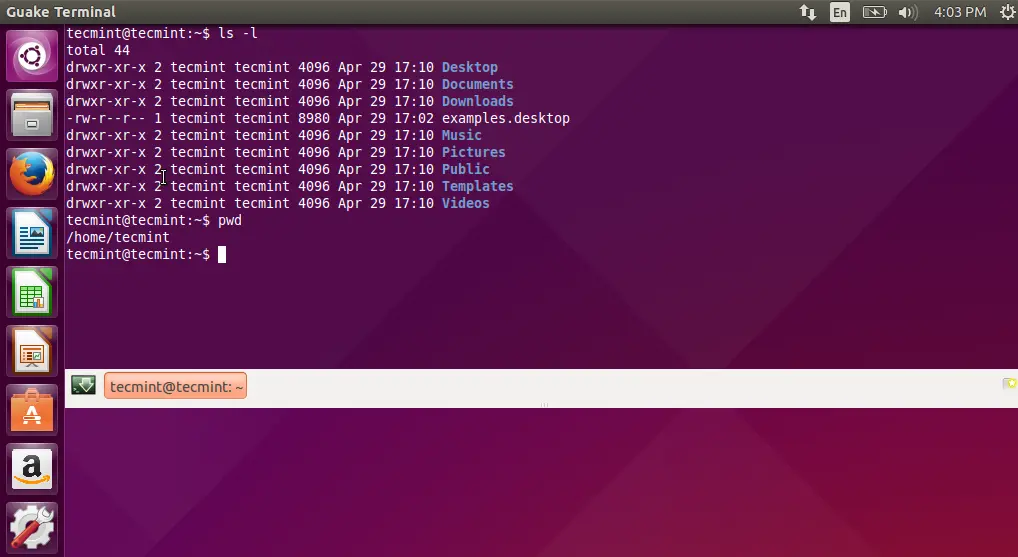
It is accessible and can be installed on max of the Linux circulations from the repository. You also can add any additional repository while using this software. It is a lightweight, easy-to-use, and sophisticated tool that can design a functional, strong, and attractive UI. It contains many additional features like provision for hotkeys, tags, background transparency, etc. Also, it provides smooth assimilation of the terminal into the gnome environment. Additionally, it can easily enable when you call and disable after you are done only through pressing a pre-defined hotkey. All these advanced functionalities make it a vivid and excellent application for every user.
3. Terminator
Terminator is an open-source emulator that is encoded in JavaScript. This terminal emulation can be used as a base on which you can experience advanced terminal emulator functions. It can be processed in several Operating Systems like Microsoft Windows, Linux, Mac, and other Unix systems. It can run on outdated Windows systems or on any modern POSIX system as well that is running on Java 6 or later. This Terminator got a license under the GPL-2.0-or-later. Between April 21, 2004, Phil Norman originally developed it, and May 28, 2004.
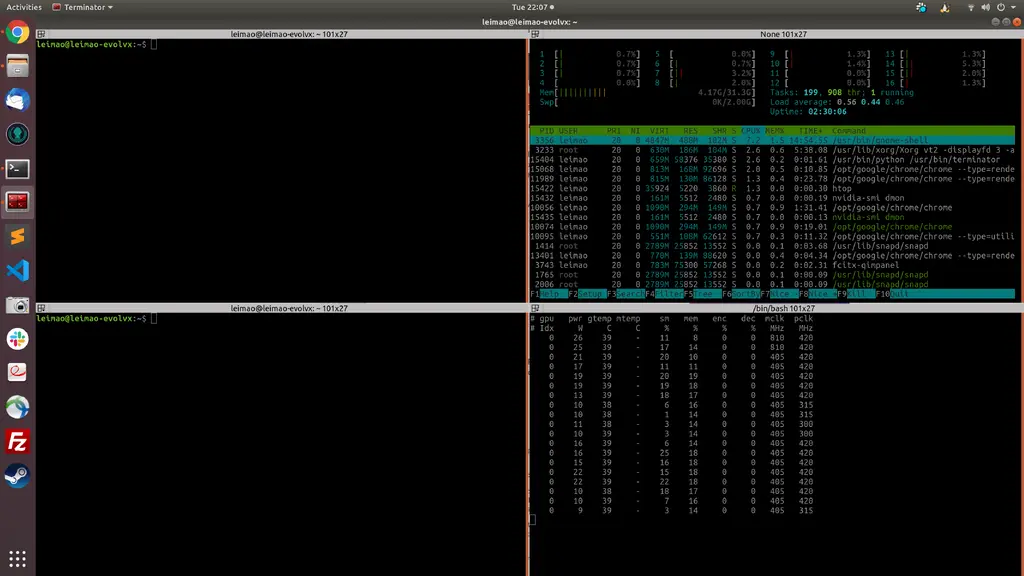
It allows users to Drag & Drop Text and URLs or can fetch the files from Finder/Nautilus/Windows Explorer on this Terminator. They also can insert text with auto-quoting systems for filenames containing shell meta-characters. Also, it provides a searching tab so that users can easily search for text and expressions within their terminal. Additionally, Terminator delivers a horizontal scrollbar when required.
4. Cygwin
Cygwin is an influential and inventive Linux simulator that is particularly designed for Windows Operating System. It lets users run their Linux software even while you are using Microsoft Windows. All this can be done only by recompiling this simulator on Windows. It is a vigorous POSIX-compatible device with a wide collection of GNU. It is an easy-to-use and simple tool that provides all functions comparable with many Linux systems.
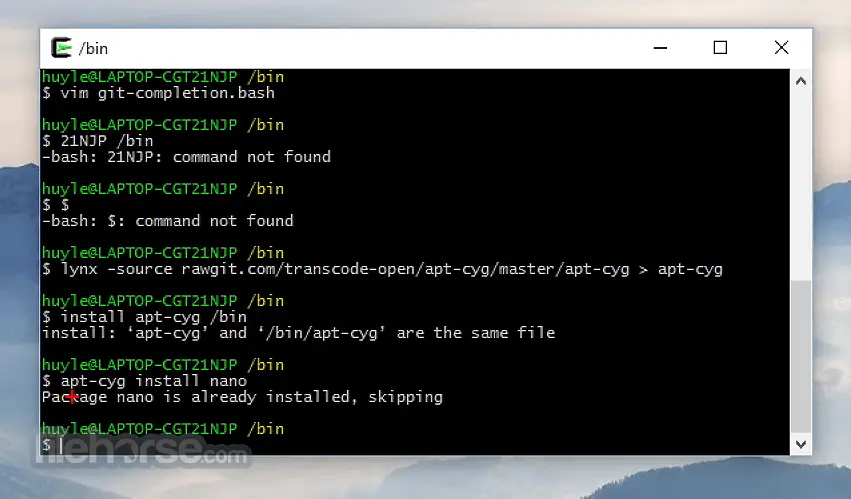
It allows native Linux apps to route on Windows fluently. It comes with a strong running capacity that directly deals with dense POSIX API systems inside Windows. Moreover, it provides all up-to-date emulation solutions with the best Linux emulators for Windows users. The application is also accessible for all x86 32 bit and 64-bit versions of Windows that are maintained regularly.
5. Cooperative Linux
Cooperative Linux, also known as coLinux, comes with one of the best innovative and powerful Linux Tools for Windows. It is a kind of virtualization software that lets Microsoft Windows users route both Windows and Linux distributions via the sync process. coLinux can operate the communal kernel technology and runs a device that assists both the Windows NT kernel and Linux kernel. It also gives the guest system to regular Linux Emulators with full control of the host system’s resources.
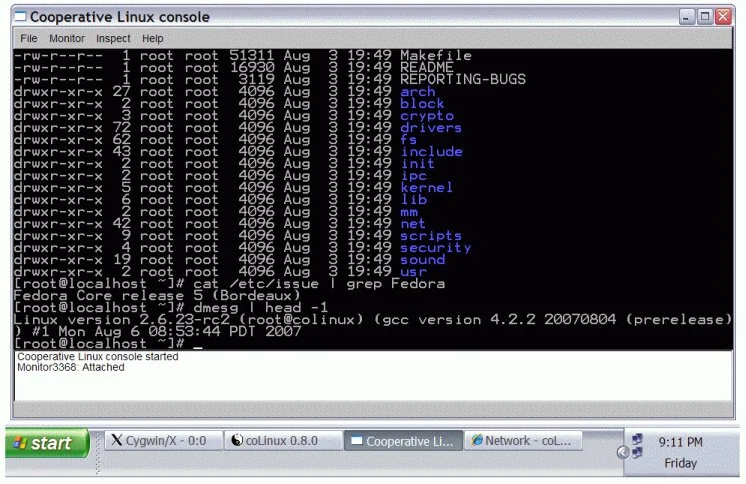
It originates with pre-built support for all major Linux desktops such as Debian, Fedora, Ubuntu, and Gentoo. Also, it lets the guest Linux system emulate Ethernet Connections using TAP, PCAP, NDIS, and SLiRP. The software also runs on several Windows systems smoothly but still lacks support for 64-bit systems.
6. PlayOnLinux
It is a program that is completely based on Wine. It allows users to use their Windows Programs on Linux. The main focus of this software is to facilitate gamers for incredible game playing. It is a quite easy use application that can be used only by choosing the type of location for the game and simply organizing the graphic cards’ settings to play the game.
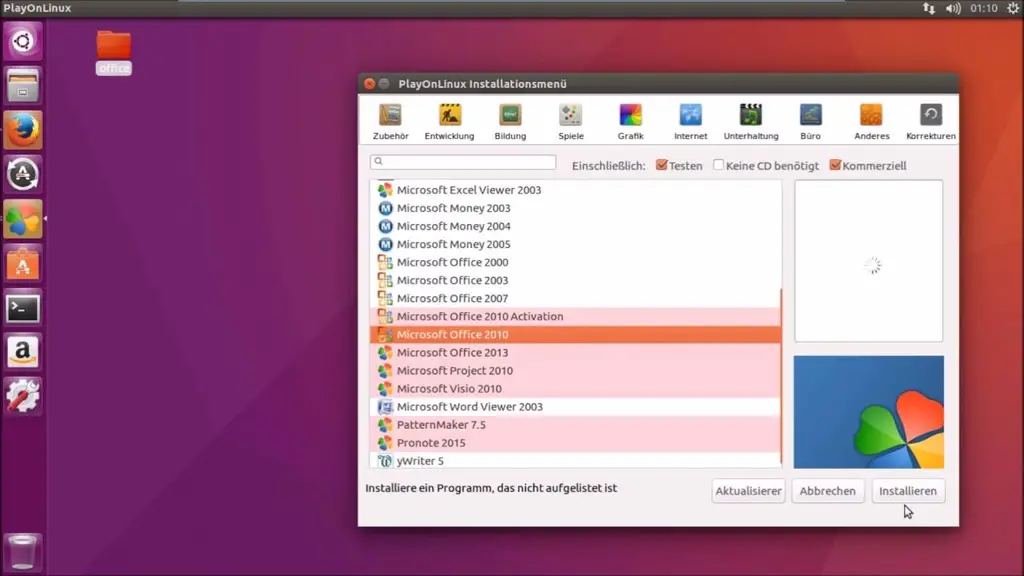
This software does not restrict users to a single platform to use it. They can install it without migrating from their using platforms and enjoy the best games on Linux just by using a simple switching key. Its features can be extended with plug-ins. Also, it makes it possible for everyone to download patches for several games.
7. Xshell
XShell is a standard open-source network driver developed to emulate a virtual terminal. It includes many technical tools, but users still find it quite easy to use. This tool enables them to use a definite processer to act as a terminal. It is relatively valuable and beneficial for office use and workplaces to access data in a mainframe when required. As it is an open-source program, you don’t have to pay any charges or subscribe to plans. After downloading or installing it, you can start expending it from inception.
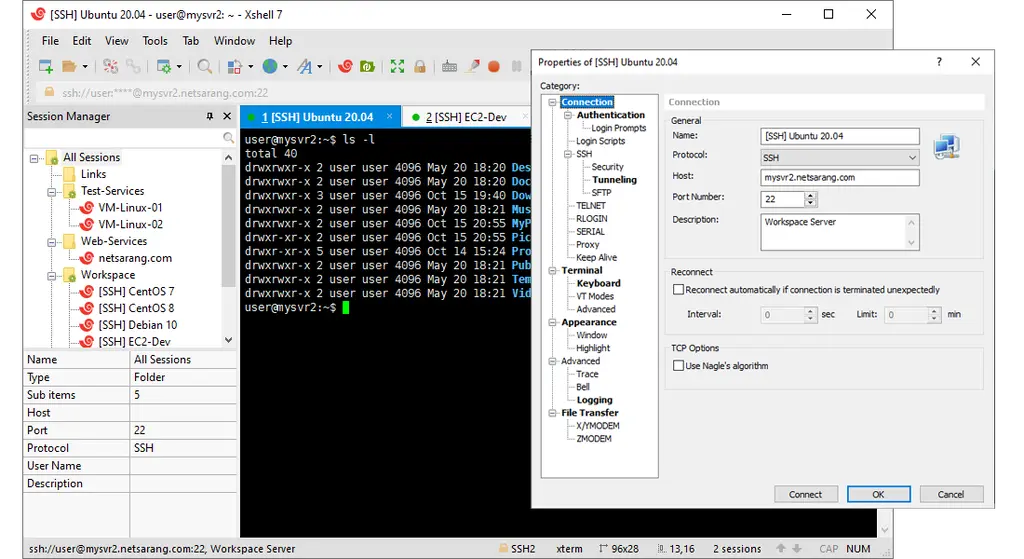
It is a powerful terminal emulator with an attractive interface that can run with RLOGIN, SFTP, TELNET, SERIAL, SSH2, and SSH1. It contains a variety of tool that delivers remarkable performance. Moreover, XShell proposed a combination of assistance and functions that are not available to other leading SSH users.
8. Qemu
This wonderful and most popular virtual emulator device supports an extensive range of hardware. It can emulate any design and comforts you with the perfect Linux system running inside Windows without any interruption. It can also be utilized as a Windows emulator inside the Linux System. Also, it provides substantial virtualization support to users. Users can create virtual machines with practically native-level presentations.
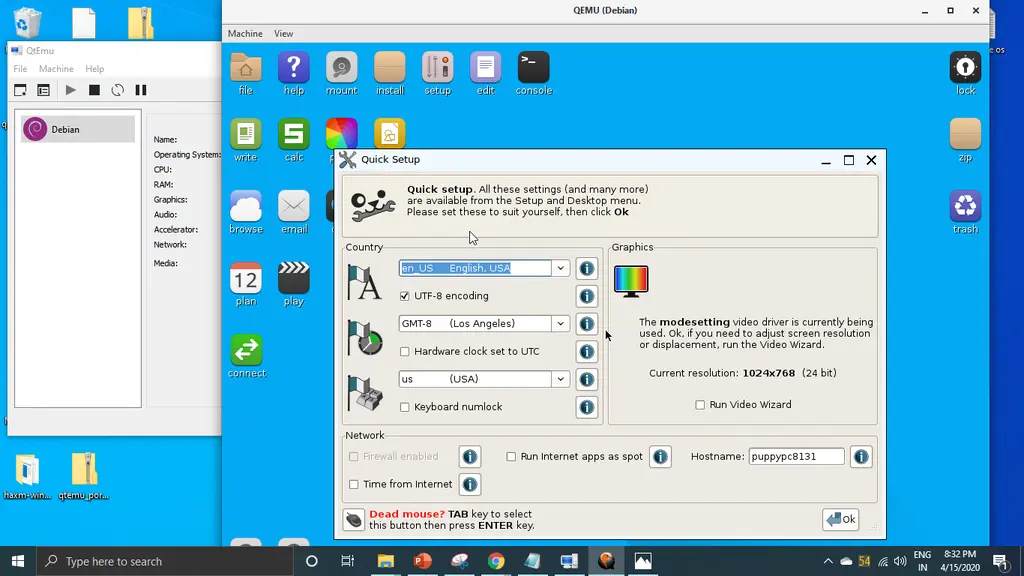
It can save the present state-run of the Linux system in the form of snapshots. You also can restore these shots for later use. Furthermore, you can directly utilize your peripherals, like hard disks, network cards, drives, audio lines, and USB applications. It uses C programming and facilitates all services quickly for Windows.
9. ZOC
It is a professional emulation software that can be used for both Windows and macOS. It contains an impressive slope of emulations and elegant tools that make it more reliable than others. You can connect to the hosts and workstations directly via secure shell, serial cable, talent, or other communication resources. It has a modern user interface and confined its own terminals. Also, it introduced several ways to make it easy for you to enjoy your desired stations.
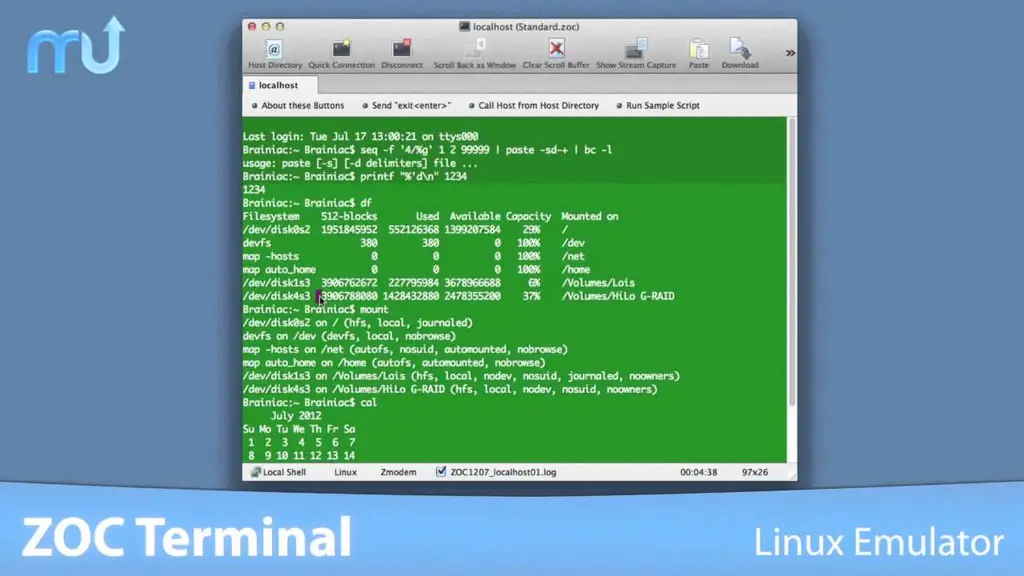
It is a highly customized tool that can meet all your preferences. It has extensive cataloging, complete keyboard remapping, and scroll back. Users get pre-defined switches, flexible keys, a functional recorder, and an address book with files and color-coded clouds. Also, it includes scripting language with up to 200 commands.
10. Indigo Terminal Emulator
Indigo is a terminal communication software that is based on multi-window sessions for all telnet and serial network connections. It offers an inclusive collection of tools and functions to compete with other terminal software. It can compute with several connections and protocols in diverse manners. The application also comprises a data converter that allows you to analyze the external data in multiple byte formats. It is compatible with TELNET and HYPERTERMINAL subsidiaries.
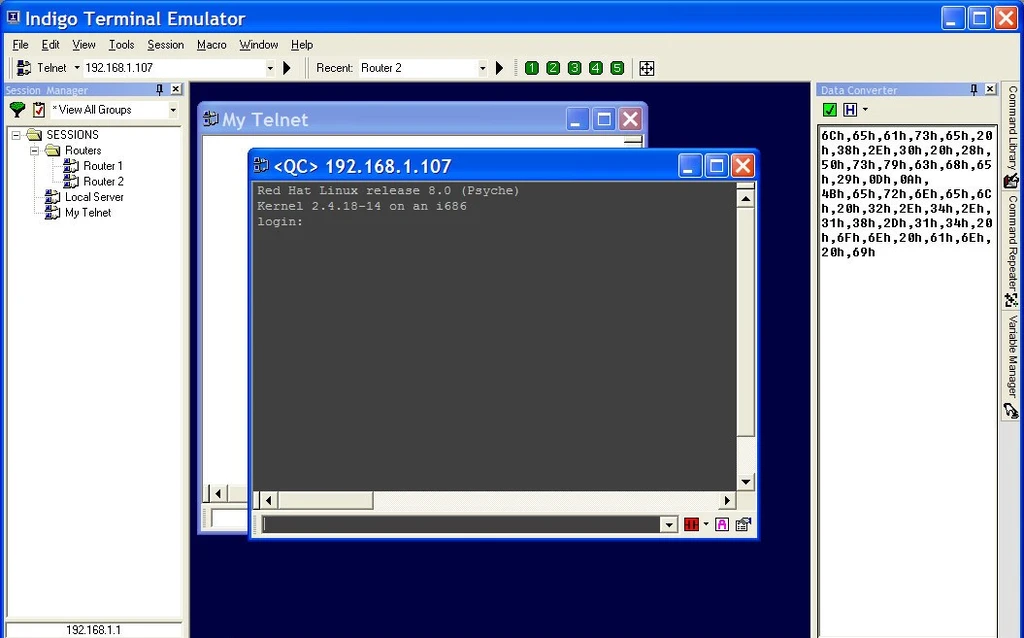
Furthermore, it includes an innovative data logging system to log session data with the passage of time and can create new log files. It also featured a command library that permits a file to be fixed in required storage and command sets that enable users to send repeated commands to a terminal session quickly. Additionally, it has an auto command repeater tool, hotkey, macro commands, custom data formatting tool, custom scripting system, and much more.
11. Hyper-V
Hyper-V was formerly recognized as Microsoft Windows Server Virtualization. It is a robust hypervisor system that is useful for Windows users. They can run the various OS functions in their system. Moreover, users can virtualize a substantial amount of POSIX Operating Systems comprising BSD and other variants while using this software. They can take full advantage of their hardware and virtually run a different OS on it. Moreover, they also run all popular and powerful apps on their windows license due to this incredible software.
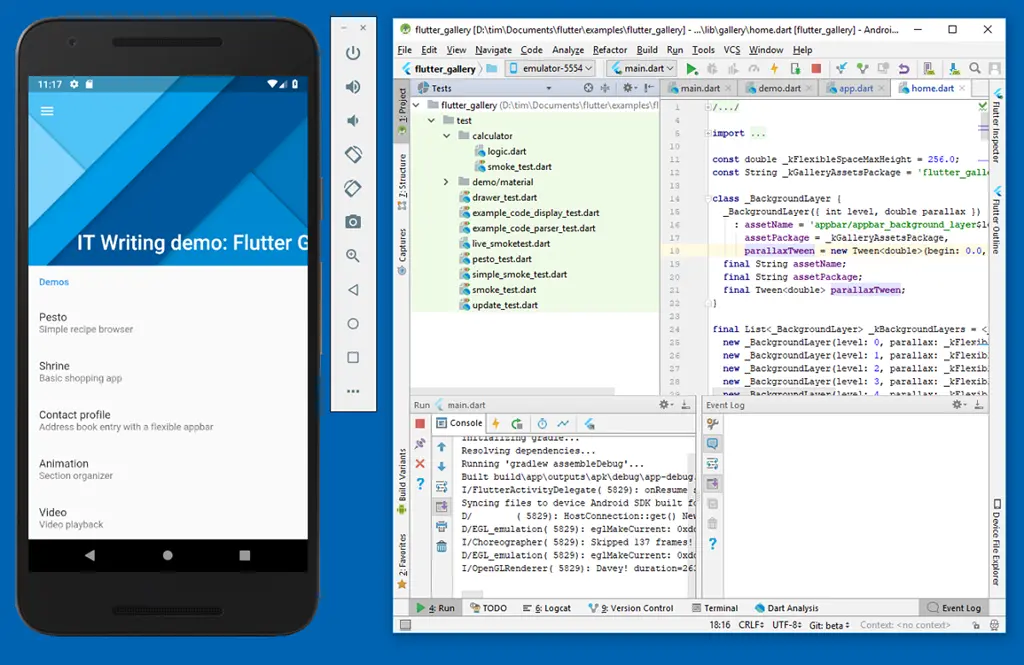
It allows the segregation of the guest Linux system through a devoted virtual panel on the Windows machine. Also, it offers a vigorous host protection mechanism that confirms the reliability of the virtual Linux system. Its PowerShell Direct feature lets sys-admins efficiently manage manifold guest OSs and directly send instructions to the guest system. It can be said that Hyper-V derives intuitive support for insistent Memory, encrypted system virtualization, d.VMMQ, cloud backup, and numerous inventive administration tools.
12. VirtualBox
VirtualBox is a free-to-use hosted hypervisor that enables users to generate x86 virtual machines. This software is the most convenient way to achieve overall Linux system emulation on Windows PC. It lets users install any Linux distributions from inside a pre-installed and running Windows OS. It is a well-developed and highly optimized application that processes C, C++, and x86 assembly code with a significantly increased performance.
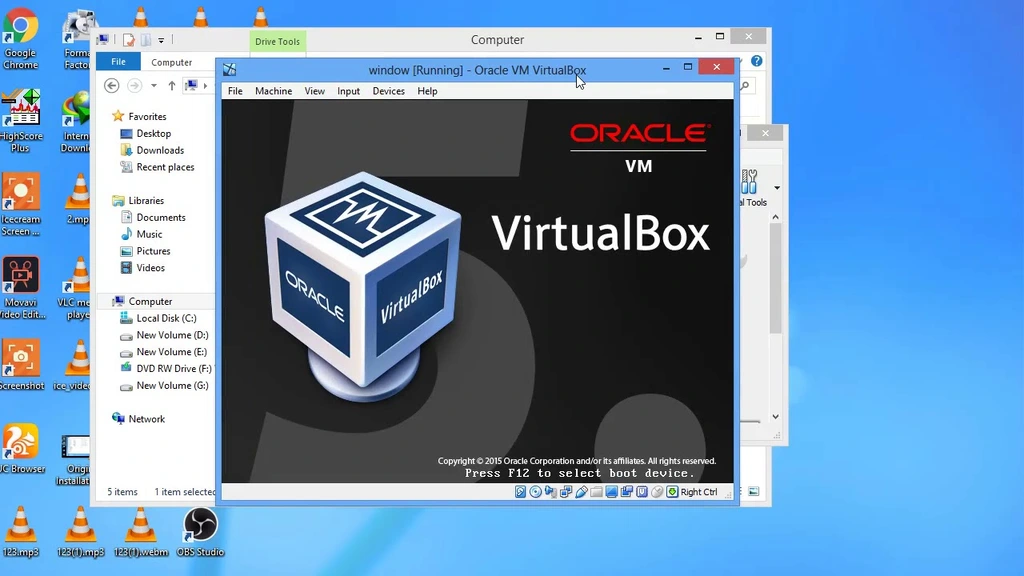
It is fully maintained and organized software accompanied by bug fixation that is added frequently. It also includes resource-intensive cloud servers for software testing. Moreover, it is an open-source nature VirtualBox that permits third-party developers to enhance the functionality as per their requirements.
13. Wine HQ
Wine is a compatibility layer proficient in running Windows applications on numerable POSIX-compliant operating systems. These Operating Systems include Linux, macOS, & BSD. Besides simulating internal Windows rationality, it translates Windows API calls into POSIX. It also eliminates the performance and memory consequences of other methods and lets you assimilate Windows applications into your desktop effectively. It is not an Emulator originally. Anyhow it contains some functionalities that make it compatible with highly optimized emulators.
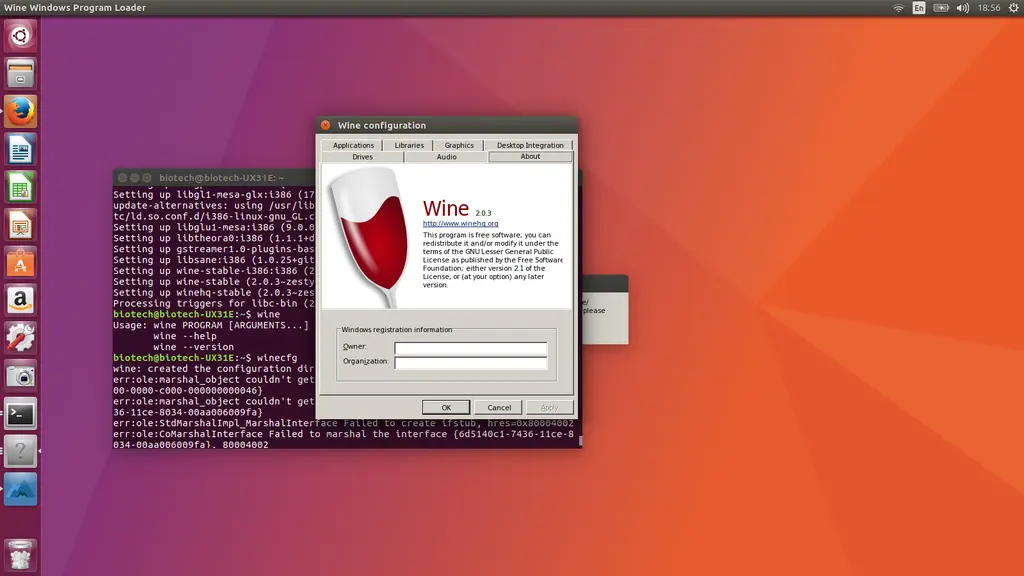
It provides a large-scale cleanup to assist ‘long’ type with MSVCRT. Moreover, it gives users a full theming fixed common control for various bug fixes. It also supports a WMA decoder for a 64-bit operating system. It includes an updated Mono engine version 7.1.1.
14. CrossOver Linux
CrossOver is the most powerful tool that can remove all restrictions that you face while expanding the Linux operation system. It was developed by CodeWeavers and fundamentally built on the source code of Wine. It enables Windows programs and games to run on Linux Operating System. This application can be processed on both Linux and Mac operating systems. It has a user-friendly interface that helps you to perform all your favorite functions within a few simple steps. This application allows you to play your preferred games on Linux despite connecting to only Windows operating system.

After getting this application installed, you can merely launch your Windows programs. It helps you to run your Windows programs and functions faster than any Operating System they would run before. Besides, it doesn’t seem to require many applications to run it. However, you also effortlessly provide a backup to your software and transfer it from machine to machine.
15. Vmware Workstation
VMware makes it easy to create and run several virtual engines on your desktop or PC. You can convert a prevailing somatic PC hooked on a VMware virtual machine. It also allows users to create a new virtual device from scratch. Each virtual machine signifies an ample PC, with the CPU, Memory, networking links, and marginal ports. Moreover, it lets you proceed with your virtual engines to run Windows, Linux, and a multitude of advanced Operating Systems on the same processor. You can shift between operating systems instantly with a single tap of a mouse. You can share files among virtual machines with drag-and-drop functionality and get accessibility to all the external devices you trust on.
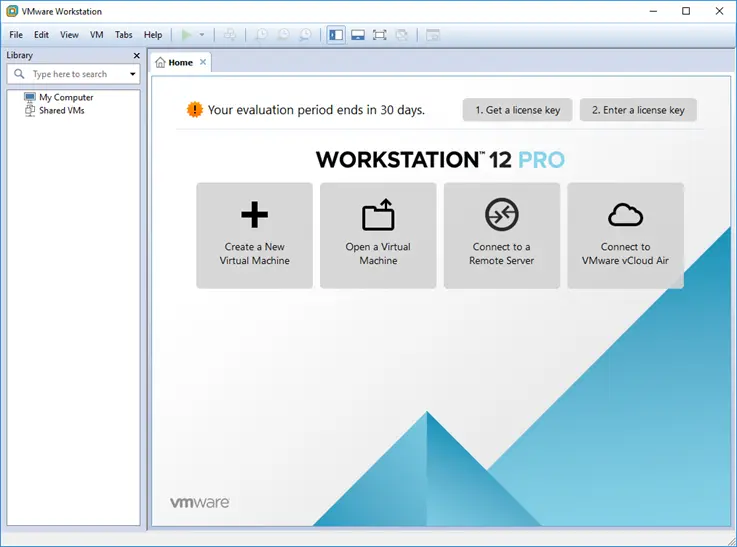
It takes virtualization to an additional level with the largest operating system support. It is a user-friendly and rich-featured software by which users can experience a comprehensive range of functions and high performance. It is designed for the professional and organizational levels that depend on virtual machines to perform their job. Moreover, it can be administered to multiple virtual machines, ampules, or Kubernetes clusters on a solitary PC. It is also compatible with the latest releases of Windows and major Linux distributions.
It enhanced 3D graphics support intended for DirectX 11 and 8GB+ GPU Memory. Also, it facilitates VM Snapshots, Emulations, and virtual networking for maximum efficiency. Additionally, users can easily exchange and access your virtual mechanisms from corner to corner VMware arrangements. They also can construct, Push, Jerk, and Route OCI Container Images along with the new VCTL CLI.
16. andLinux
andLinux is a vigorous yet up-to-date emulator to run inside windows systems. It carries a wide-ranging Ubuntu system by expanding its Kernel and Xming for the customary X server. This is a well-organized virtual machine to run Linux. It also can be operated for key versions of windows. Besides, it is also used to apply OS-level virtualization for attaining its end goals. It is considered one of the most competent Linux emulators that do not require any additional virtual machine to run.
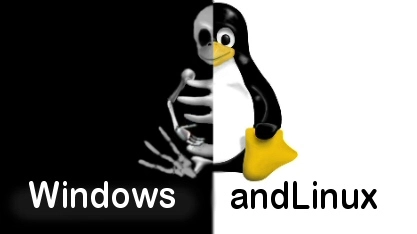
The software is completely useable as an open-source and originates under the lenient GNU GPL license. It empowers Windows users to run Linux commands directly every day from Windows scripts expending by acquiring the Cmd.exe utility. It allows operators to consume the KDE or XFCE Linux desktop setting along Synaptic for platform administration and Nautilus as the file manager. It also supports various Windows systems like Windows 2000, XP, 2003, Vista, and 7; however, it lacks 64-bit support.
17. Espxe
ePSXe is a unique software that is designed to run on Android devices. It is a PlayStation emulator, a port of the renowned ePSXe for computers. It provides high-class compatibility, upgraded speed, and an accurate sound system. It can be used on smartphones, tablets, or PC as well and provides a platform for 1-4 players plus an exciting two-player option using split-screen mode. It includes fundamental touchscreen pad sustenance, hardware keys mapping, and analog sticks.
This mapping contains Xperia Play, smartphones featuring keyboard or gamepad, peripheral gamepads, Bluetooth or USB like WiiMote, Sixaxis, Xbox 360, etc. Additionally, it also supports OpenGL HD enriched graphics through the Peopsxgl Plugin, trickster codes savestates, and mem-cards as well.
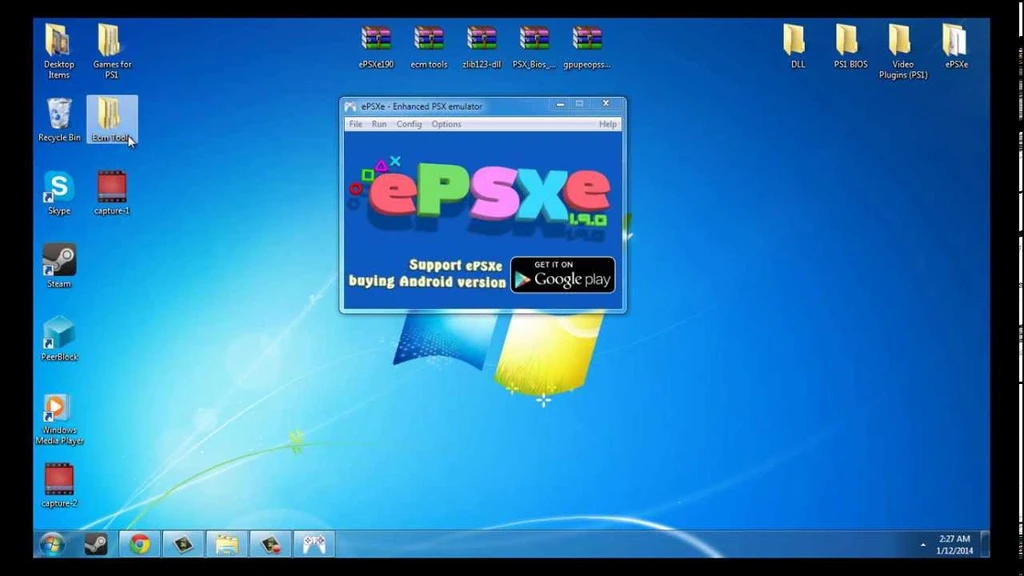
This powerful application includes intuitive assistance used for ARM or Intel Atom X86. Loaded with countless modern emulators, it makes use of plug-ins like CD-ROM drive utilities to emulate GPU, SPU, and more. With this exclusive application, Games can load from the computer’s CD drive or other types of CD imagining directly from the customer’s hard drive. The players can play games on fragmented screens and use them for unlimited time without signing up for it. They acquire all advanced features for free, so they don’t need any purchases for using or updating the application at any cost.
Final Words
All the above-mentioned software includes plenty of features and advanced functions to operate all Linux emulators. Although there are some lacking functions compared to genuine Linux emulators, these can fulfill all initial requirements to operate it on Windows that is available. Maximum Linux users will find using one Linux tool for Windows to enjoy additional features. Since it is difficult to pack full Linux runtimes in software projected for another system, we tried to highlight each plausible Linux emulation system available. Hopefully, you acquired complete insight from this article and fulfilled all the requirements you are looking for.
